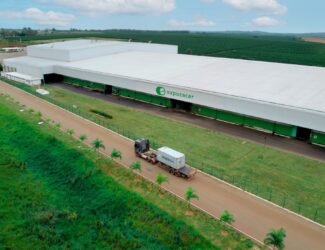
Coffee Prices Retreat on Rain Forecasts for Brazil
Dubai – Qahwa World
Coffee prices fell for the second consecutive day on Tuesday as forecasts pointed to rain across key coffee-growing regions in Brazil, easing previous concerns over dry conditions.
December arabica coffee (KCZ25) closed down 1.56% at –5.95, while November ICE robusta (RMX25) slipped 1.27% to –57. According to Climatempo, rainfall is expected to spread from São Paulo to Minas Gerais this week, with some regions receiving over 30 mm of precipitation — a welcome relief for farmers during the critical flowering stage of the 2026/27 crop.
The decline follows Monday’s report from the International Coffee Organization (ICO) showing that global coffee exports between October 2024 and August 2025 rose 0.2% year-on-year to 127.92 million bags, signaling abundant global supply.
Robusta prices also faced pressure from Vietnam, where the National Statistics Office reported that coffee exports from January to September 2025 surged 10.9% to 1.23 million metric tons (MMT), reinforcing supply-driven headwinds.
Just days earlier, coffee prices had hit two-week highs on worries about dry weather in Brazil. Somar Meteorologia reported that Minas Gerais — the nation’s largest arabica region — received only 0.9 mm of rain in the week ending October 4, representing just 3% of the historical average.
Adding to the market’s complexity, U.S. tariffs on Brazilian imports have tightened supply in the American market. The 50% tariff, imposed earlier this year, has led to a sharp drawdown in ICE-monitored inventories, with arabica stocks dropping to a 1.5-year low of 534,665 bags, and robusta stocks to a 2.5-month low of 6,293 lots. Roughly one-third of unroasted coffee consumed in the U.S. originates from Brazil, intensifying the domestic supply strain.
Meanwhile, the National Oceanic and Atmospheric Administration (NOAA) raised the likelihood of a La Niña event in the southern hemisphere to 71% for October–December 2025, potentially signaling drier conditions in Brazil later this year.
Brazil’s national crop forecasting agency Conab recently trimmed its 2025 arabica estimate by 4.9%, down to 35.2 million bags, and revised its total coffee production forecast to 55.2 million bags — a modest decrease from 55.7 million in May.
Earlier, Cecafé, Brazil’s coffee exporters’ council, reported that the country’s July exports fell 28% to 2.7 million bags, bringing total shipments for January–July 2025 down 21% year-on-year to 22.2 million bags.
On the other hand, Vietnam — the world’s largest producer of robusta — is expected to harvest a 4-year-high crop of 1.76 MMT (29.4 million bags) in the 2025/26 season, up 6% year-on-year.
The U.S. Department of Agriculture’s Foreign Agricultural Service (FAS) projects global coffee production for 2025/26 to grow 2.5% year-on-year to a record 178.68 million bags, driven by a 7.9% increase in robusta output to 81.66 million bags, while arabica output is forecast to decline 1.7% to 97.02 million bags. FAS expects ending stocks to climb 4.9% to 22.82 million bags.
Despite these figures, Volcafe foresees a global arabica deficit of 8.5 million bags for 2025/26 — the fifth consecutive year of shortage — widening from 5.5 million bags last season.



